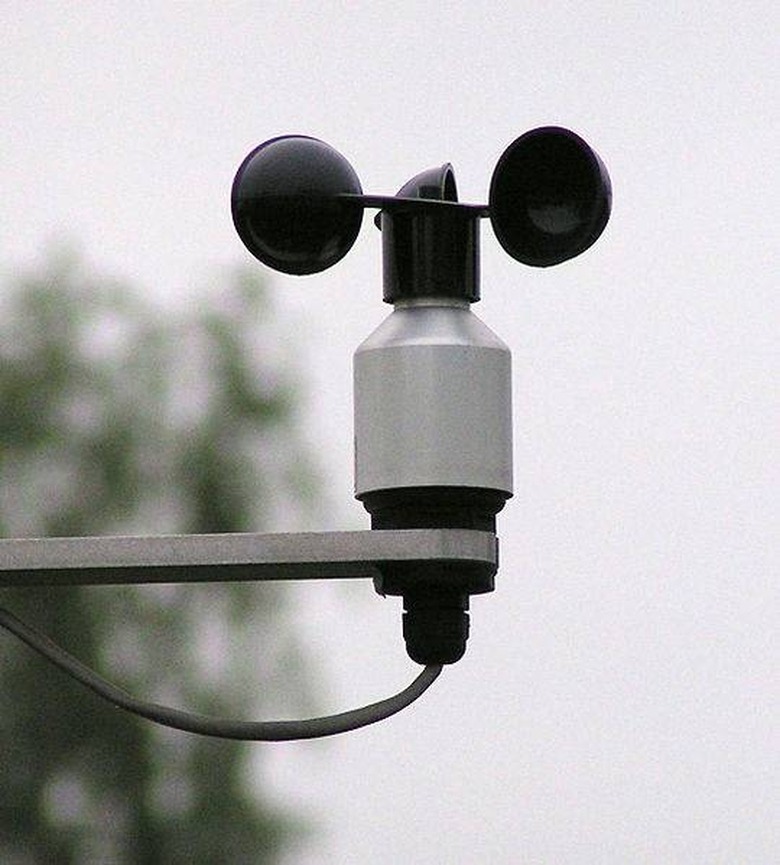How To Read An Anemometer
Anemometers are used to measure either wind speed or air pressure, depending on the style of anemometer. The most familiar form, the cup anemometer, was invented in 1846 by John Thomas Romney Robinson and features four hemispheric cups arranged at 90-degree angles. Making this form of anemometer is a common school science project, but reading it requires a bit of mathematical skill.
Step 1
Mark one cup as the reference cup by painting it or tying a piece of yarn to the rod to which it is attached.
Step 2
Place the anemometer out in the wind. The cups are already arranged to catch the breeze.
Step 3
Calculate the distance the reference cup will travel to revolve around the axis once by taking the length of its rod from the axis, doubling it and multiplying by the value of pi. (This is the formula for finding the circumference of a circle from its radius.) Convert this distance to either feet or meters for convenience.
Step 4
Count the number of times the reference cup makes a complete revolution around the axis in a minute.
Step 5
Multiply the distance traveled in one revolution by the number of times the reference cup revolved around the axis. This will produce an approximate wind speed in feet per minute or meters per minute.
Step 6
Convert this value to distance per hour by multiplying by 60. If the distance is measured in feet, divide by 5,280 to produce an approximate wind speed in miles per hour. If the distance is measured in meters, divide by 1,000 to produce an approximate wind speed in kilometers per hour.
Things Needed
- Cup anemometer
- Watch, clock or timer
- Calculator
TL;DR (Too Long; Didn't Read)
Another way to calculate wind speed with an anemometer is to drive in a car at a low, fixed speed on a windless day holding the anemometer out the window and count the number of revolutions the cup makes in a minute. If the car is traveling at 10 mph and the cup makes 100 revolutions, then when the cup makes 100 revolutions when the anemometer is stationary, the wind speed is 10 mph. This forms a baseline; if the number of revolutions is more or fewer, divide this number by the baseline number of revolutions and multiply by the baseline speed to determine the actual wind speed. (In the example given, if the cup makes 120 revolutions, divide by 100, then multiply by 10 to produce an apparent wind speed of 12 mph.)
Don't make this baseline observation on a busy street.
Warning
Be aware that during the minute you count revolutions, the wind may gust, die down and gust again. You are looking for an average wind speed. Be aware also that the anemometer's ability to measure wind speed is limited by friction of the axis and drag from the wind itself. More accurate cup anemometers have only three cups arranged in an equilateral triangle.
Cite This Article
MLA
Contributor, . "How To Read An Anemometer" sciencing.com, https://www.sciencing.com/read-anemometer-2074392/. 24 April 2017.
APA
Contributor, . (2017, April 24). How To Read An Anemometer. sciencing.com. Retrieved from https://www.sciencing.com/read-anemometer-2074392/
Chicago
Contributor, . How To Read An Anemometer last modified August 30, 2022. https://www.sciencing.com/read-anemometer-2074392/
